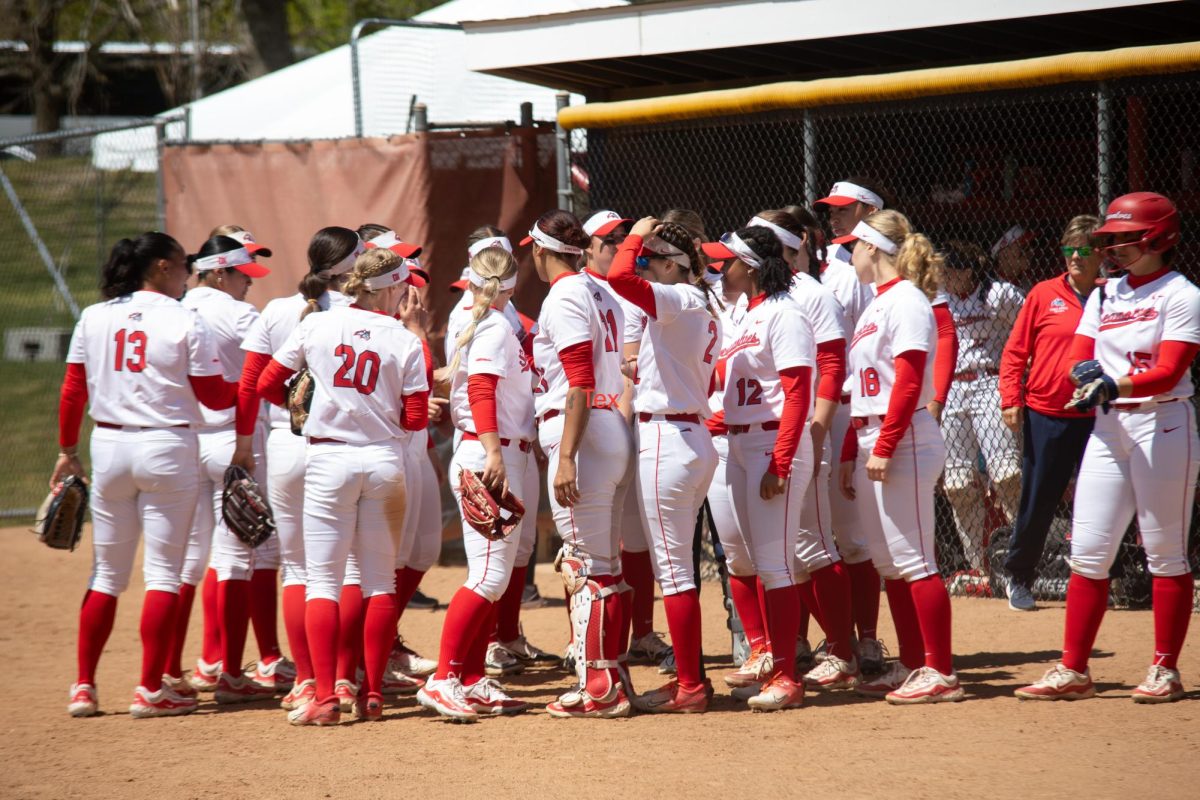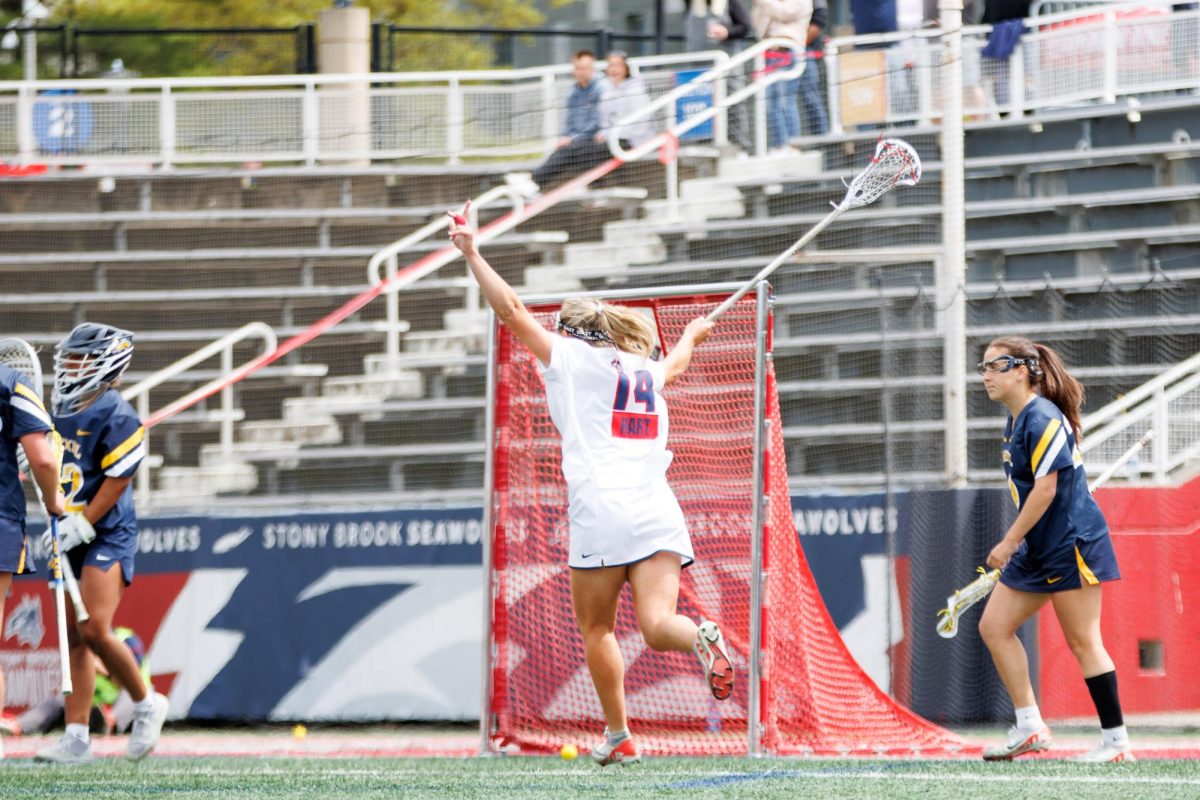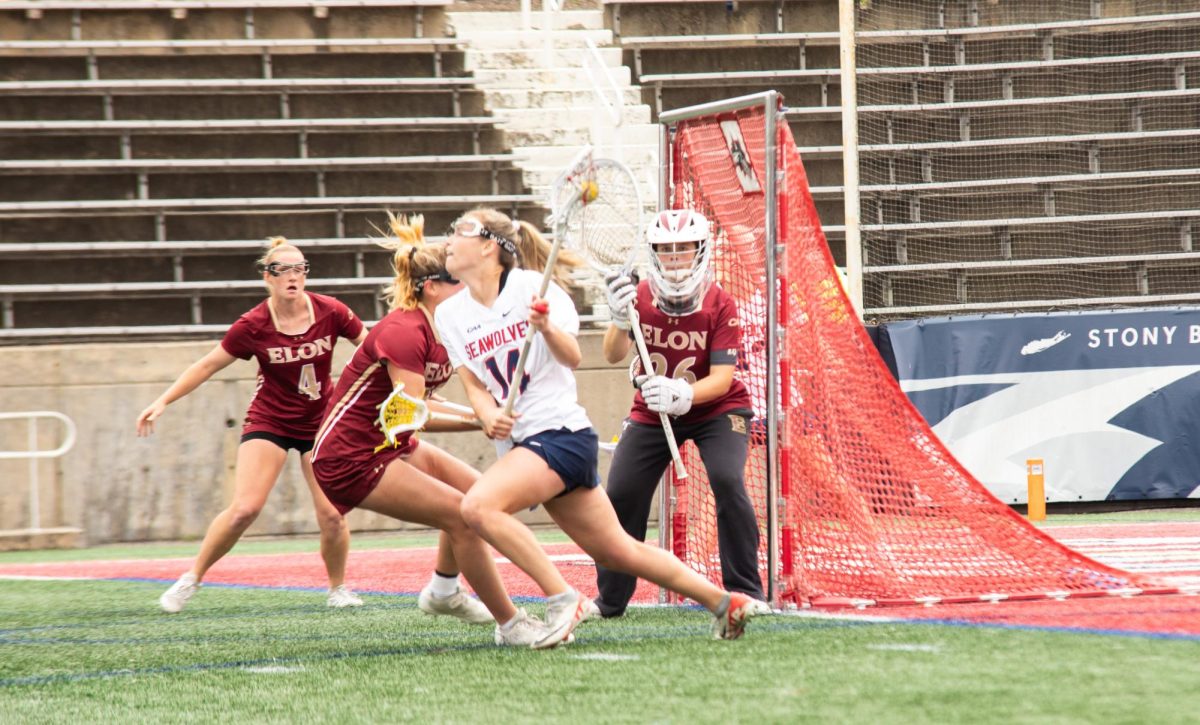A slight, dark-blonde haired woman sits at her instrument, her fingers poised, her back straight and slacks-covered legs in line. She straightens the sheet of music she is about to play and adjusts her seat, blinking behind sharp-looking black frames a few times. With a quick breath, she begins to play.
Her fingers glide up and down the keys, evoking sounds out of another era—17th and 18th century Europe to be exact. Baroque music, the highly decorated musical sound of countries such as Italy and France, has touched her life. And from the moment her fingers touched the harpsichord, with its primitive wooden frame and carved ivory and black double-keyboard, life has never been the same.
Anna Parkitna is a harpsichord player.
“The feel of the keys is different,” she says, her stubby fingers lightly grazing the thin polished keys. She speaks elaborately, in a distinctly European accent, but it’s hard to pinpoint where and why she sounds the way she does.
Anna never thought she would end up spending 13 years of her life perfecting performance techniques on an instrument born more than 300 years ago.
She was born in Stargard, Poland to a family in which no one was musical other than her older brother, who played the family piano and took lessons. As a child, Anna was drawn to the ivory keys and soon began to tinker around. Sitting at the keys, playing little pieces and making up her own, she soon began to love the quick, light sound as well as the gentle, romantic ease of the piano hammers hitting the dampers. At the age of 7,— she got a teacher.
It was her first step on her path to a lifelong relationship with music.
Six years later, at 13, Anna moved to Poznan, Poland’s fifth biggest city—an old political center with a wealth of cultivated history—to study piano at a music high school. Although she was young, the experience taught her independence. She stayed in a hostel next door.
“It was a music high school so we had a lot of music subjects with very little bio, physics,” she says, nostalgia playing over her smile. The school correlated with other art mediums, so she met people from ballet school, and the high school of fine arts.
It was there that she was introduced to the harpsichord.
“My piano teacher asked me if I wanted to take lessons on the harpsichord and I said sure, why not?”
At first it was just a simple hobby, to take lessons on the piano but play the harpsichord, on the side. Unexpectedly, her interest in the harpsichord began to grow deeper and after graduating from high school, she quit the piano and decided to play the harpsichord full time. Baroque had caught her soul.
“I just realized when I was a teenager, old romantic repertoire—nineteenth century repertoire—that I played the piano with wasn’t for me,” she says. She folds her legs and crosses her arms glancing at the harpsichord as she sits in the practice room at Stony Brook University.
The Baroque era, which flourished from the 1600s to 1700s, was characterized by highly ornate, lavish and intense music. The foundation of Baroque is the doctrine of affections: the belief that musical works should express emotion and feeling in their composition. It’s characterized by a highly decorated melodic line and places an emphasis on volume, texture and pace in the music. The two major styles of Baroque are Italian and French. It can be played on either the virginal (an earlier version of the harpsichord, which produces a lighter sound) or the harpsichord, which produces a colorful, textured sound.
“The music sounds very sophisticated to me,” Anna says. A smile crosses her face as she glances at the familiar harpsichord next to her.
Poznan was a great place to begin her studies as a harpsichordist but starting a new instrument with new techniques didn’t come easy.
“I was a bit frustrated because I made this big decision—I’m not playing the piano, I’m playing the harpsichord. But my fingers didn’t want to listen to me, they didn’t want to do what I wanted them to do. I had to forget piano technique and learn harpsichord technique almost from scratch.”
She mindlessly flexes her fingers.
“The level at high school was really high, the most difficult repertoire you can imagine” she says. “It was very frustrating but I wanted to play so much that I managed to develop the harpsichord technique at the time.”
After 6 years of studying the instrument, she graduated from high school and attended a university in Poznan for four years. During her last year she felt an insatiable urge to move westward.
“I needed a school and teachers that understood early music,” she says. “I had to go to a place with richer traditions of Baroque music.”
She chose London.
In her last year at the Poznan university her work was boiled down to two major recitals, one in December and one in May. She went back to Poland for the performances but stayed in London. In London the renowned Guildhall School of Music and Drama—known for cultivating artists—appealed to her. By the time she finished her university studies in Poznan, she had two Masters degrees from two different countries—one from Poland and the other from England.
The musician, who counts artists like U2 and Radiohead as favorites, felt life in London was more than exceptional. The Guildhall School and the city in general, became a playground for nurturing and developing Baroque style.
“In London my whole experience was much broader,” she says. She gestures away from herself.
“It wasn’t just about practicing at school; it was about enjoying Baroque architecture, going to museums. I could practice in a museum—Handel house—where Handel lived all his life. I felt that the music of the past was not really the past. I lived in this music.”
Anna’s two years in London were financially difficult, but her yearning for musical perfection kept her focused. Time passed and a sudden urge to move again, prompted her migration to the United States, to New York, to Long Island.
She moved to Stony Brook University in 2009 and her entire world shifted. Suddenly, she was not only in a different hemisphere and country, but away from any kind of musical or cultural center that had fed into the rich Baroque traditions she lived.
“It’s good if you need to focus and practice and improve your skills, but outside, if you choose to play the harpsichord just to play baroque music, you basically choose the lifestyle,” she says.
The detachment from big events going on in the world of music only comes from the distance between Stony Brook and the Big Apple. The amount of effort it takes to get to the city when studying as a graduate student was underrated in her mind, when she first started.
“I didn’t know that I would be so busy at school,” she says. “Before you start your doctorate you don’t really know how busy you’re going to be.”
Although she doesn’t manage to go into New York city once a week, as she thought she would, she has every reason to stay on campus. While most schools only have one or two harpsichordists, Stony Brook University has 8-10. It’s mostly because of Arthur Haas, an international harpsichordist specialist who’s studied in Paris, Amsterdam and at The Julliard School in Manhattan. He’s been an artist in residence at the university since the mid- 80s.
“He attracts people from all over the country,” she says. “He is a great specialist—when I was young in Europe I heard his name.” She smiles.
Her typical day includes at least three hours of practice to keep the fingers and technique intact. She spends the rest of the time in hour-long seminars preparing for her Doctorate in Musical Arts, one that can take anywhere from four to six years to complete. But, she’s currently working towards the end of her studies for her doctorate. It requires students to perform five recitals, and she’s done four so far.
Ever striving for more, she took on another challenge this year.
“I started my second program this year, so now I’m a harpsichord and musicology student,” she says without a blink. Her fervor to be the best is illustrated by her black and white polka dotted blouse, ironed crisp and black slacks that hit at just the right length. Her pointed black flats look new.
“This means I’m extremely busy,” she says. “I have less time to practice now, but somehow I have to find time. I can’t let myself stop playing for my technique. Just like athletes we have to take care of our technique, our muscles.”
In her rare free time, she watches old movies that feature music or musicians. Psychological dramas are also favorites. And she spends time with her boyfriend, a graduate student in the math department.
Anna loves Bach, a Baroque harpsichord and organ master known for his brilliant compositions. But she doesn’t have a favorite Baroque composer.
“Whenever I hear music I like I’ll think, this is my favorite composer, and then I’ll hear another and think that is my favorite composer,” she says. Her eyes twinkle as a small chuckle escapes.
She does know however, that Baroque musicians are different. In her mind it’s a different category of music and they have different performing conventions. Anna now considers herself a part of the Early Music Movement.
The movement traces back to the 1940s after WWI, when music pioneers such as Paul Hindemith and Noah Greenberg founded and began to teach early music performance programs in the U.S. It stemmed from an interest in historically-informed performance of medieval, Renaissance and Baroque music. The movement took off in the 60s, 70s and 80s.
“This music is so old that in the meantime we lost traditions of performing this music and now we have to rediscover this on the basis of old traditions,” she says.
Anna sits up in her chair, gazing intently through her glasses.
“Baroque music goes better with my character,” she says. “This music somehow touched me in a different way than other music.”






